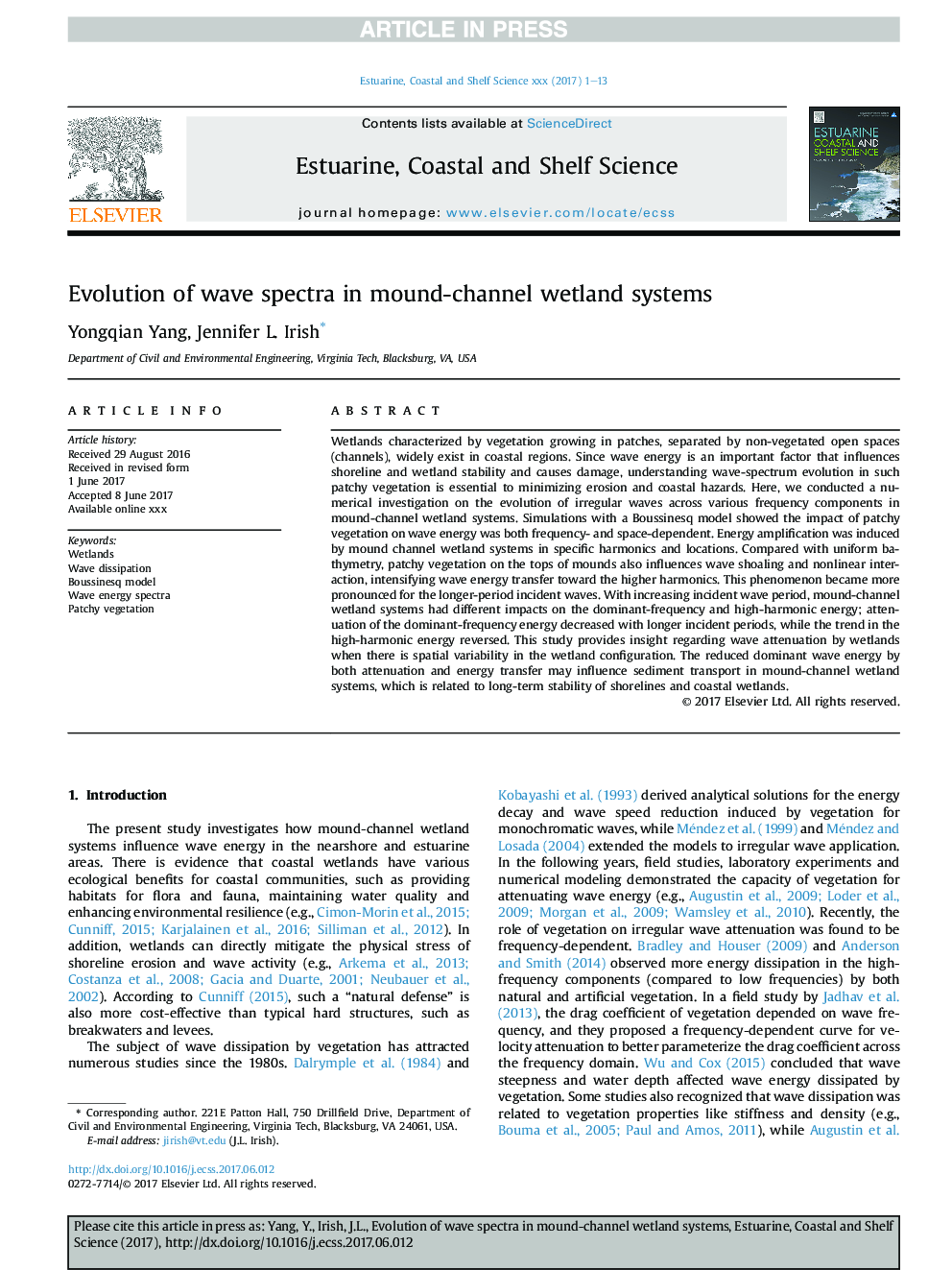| Article ID | Journal | Published Year | Pages | File Type |
|---|---|---|---|---|
| 8884858 | Estuarine, Coastal and Shelf Science | 2018 | 13 Pages |
Abstract
Wetlands characterized by vegetation growing in patches, separated by non-vegetated open spaces (channels), widely exist in coastal regions. Since wave energy is an important factor that influences shoreline and wetland stability and causes damage, understanding wave-spectrum evolution in such patchy vegetation is essential to minimizing erosion and coastal hazards. Here, we conducted a numerical investigation on the evolution of irregular waves across various frequency components in mound-channel wetland systems. Simulations with a Boussinesq model showed the impact of patchy vegetation on wave energy was both frequency- and space-dependent. Energy amplification was induced by mound channel wetland systems in specific harmonics and locations. Compared with uniform bathymetry, patchy vegetation on the tops of mounds also influences wave shoaling and nonlinear interaction, intensifying wave energy transfer toward the higher harmonics. This phenomenon became more pronounced for the longer-period incident waves. With increasing incident wave period, mound-channel wetland systems had different impacts on the dominant-frequency and high-harmonic energy; attenuation of the dominant-frequency energy decreased with longer incident periods, while the trend in the high-harmonic energy reversed. This study provides insight regarding wave attenuation by wetlands when there is spatial variability in the wetland configuration. The reduced dominant wave energy by both attenuation and energy transfer may influence sediment transport in mound-channel wetland systems, which is related to long-term stability of shorelines and coastal wetlands.
Related Topics
Physical Sciences and Engineering
Earth and Planetary Sciences
Geology
Authors
Yongqian Yang, Jennifer L. Irish,
